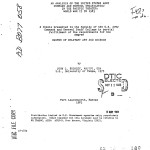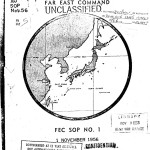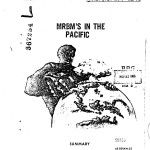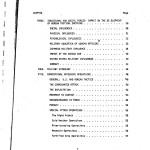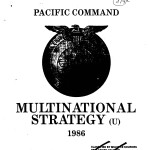
The United States Pacific Command (USPACOM) Multinational Strategy (MNS), published in 1986, defines USPACOM objectives in working with each nation in the pacific theater.
The report states that “the need for a multinational strategy was first expressed in the Defense Guidance budget of President Reagan’s administration. The Defense Guidance stated that global strategy required the U.S. and its allies to contain and reverse the expansion of Soviet control and military presence throughout the world.”
The MSN thus examines the objectives of the USPACOM in working with multiple nations. The report states that “the USPACOM Stategy is built primarily on a foundation of bilateral relationships. Larger regional coalitions, to the extent that they can exist, depend on these bilateral relationships and the interactions of the coalition members.”
This report was released to the Nautilus Institute under the US Freedom of Information Act (FOIA).


